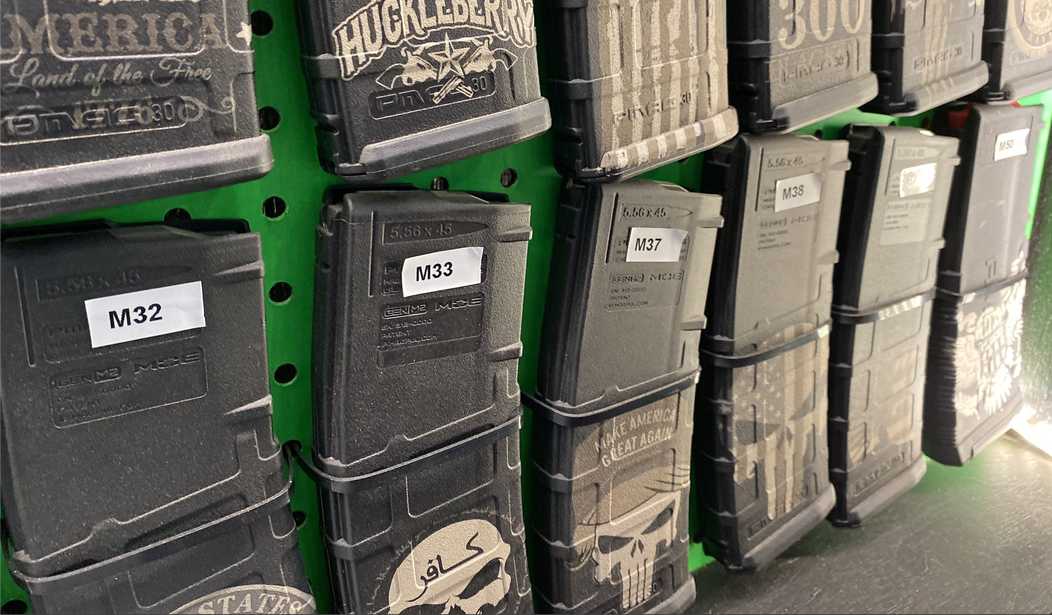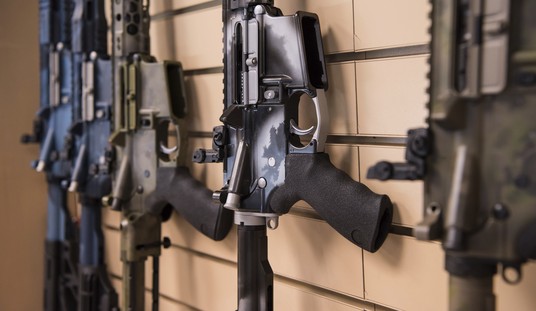In what should be a semi open and shut case, the matter of New Jersey’s 10 round magazine capacity limitation case has been remanded further down. The Grant, Vacate, Remand from the Supreme Court of the United States on Association New Jersey Rifle, et al v. Attorney General New Jersey, et al. should have been a solid indicator to the United States Court of Appeals for the Third Circuit on how to rule. Based on prior arguments and the textual lens on how to view things, which was delivered by NYSRPA v. Bruen, the fact that this isn’t settled already is baffling.
The August 25, 2022 Order decided to “kick”, in the “kick or stick scenario”.
This matter having been remanded for further consideration in light of the Supreme Court’s decision in New York State Rifle & Pistol Ass’n v. Bruen, 142 S. Ct. 2111 (2022), and upon consideration of the parties’ positions on whether it should in turn be remanded to the District Court for decision in the first instance under the standard announced in Bruen, it is hereby ORDERED that the matter is so remanded. Judge Matey dissents from this order, as described in the attached opinion.
Had the Third Circuit agreed to rule on or render an opinion on the case, there’s a possibility that Garden Staters could have had standard capacity magazines back before year’s end. However, the battle will continue, but we’re at least not starting at square one.
In a recent interview that aired on August 27th, Dan Schmutter, the attorney litigating the case on behalf of the Association of New Jersey Rifle and Pistol Clubs, discussed the news. During Gun for Hire Radio Episode 588 Schmutter went into detail on that case, as well as other pending pieces of litigation, and topics.
Schmutter: So unfortunately, guys, I have to open with some not great news. We just heard from the Court of Appeals for the Third Circuit. In the magazine case, we were hoping to keep the case up at the Court of Appeals and have…and we have asked The Court of Appeals to decide the case on the merits right now. The State was urging them to send it back down to the trial court, the District Court. And unfortunately, we got a two one ruling today that the Third Circuit decided to send it back down to the District Court. And what that does is it just adds another layer of delay. And cost. And so unfortunately, you know, now we’re back at the District Court, we have to do that all over again. We’ll probably end up back at the Court of Appeals, you know, whichever way it goes, somebody’s not gonna be happy. So, you know, it’s unfortunate. We were urging the court to not give in to the state’s request to add more delay and cost. And it was a two, one decision. We got a very nice dissenting opinion from Judge Paul Matey. And he agreed with us that there was no reason to send it back down to the trial court. The usual…it is very typical for when something comes down from the Supreme Court for the Court of Appeals to send it all the way back down to the trial court. But that’s not unusual. It’s actually quite typical. The problem is, in this case, it’s not necessary. And there’s plenty of precedent for not doing that where it’s not necessary or appropriate. And I think we made a very strong case that it’s not. But, you know, the court did with the court didn’t, so we have to live with it. And so we’ll fight the fight down at the District Court. But it’s disappointing. I mean, they really…our feeling was they should have done the right thing here and just kept it, decided it. And, that’s…that’s life.
The dissent that Schmutter brought up is worthy of a read. Some of the crisper arguments made within include:
The State’s follow-on—that it missed the chance to provide historical evidence— fares no better. Round after round, in both the District Court and this Court, history took center stage. The State joined that discussion, arguing unsuccessfully that laws regulating ammunition capacity were longstanding. It strains credibility for New Jersey to now suggest it simply overlooked the focus on history and practice outlined in Heller, repeatedly applied by this Court, and vigorously advocated in this case. That the State decided not to press those points harder, whether as clever strategy or careless slip, is not relevant. We have been far less forgiving of that sort of waiver by far less sophisticated litigants.
With no new law to apply, and the historical record firm, there would seem no work remaining on remand.3 But what is the harm, some might ask? Why the rush? A question rarely raised when other fundamental rights are at issue and answered, again, by the Supreme Court: bearing arms “is not a second-class right, subject to an entirely different body of rules than the other Bill of Rights guarantees.”
…
To avoid further confusion, there simply is no such thing as a “large capacity magazine.” It is a regulatory term created by the State, meaning no more than the maximum amount of ammunition the State has decided may be loaded into any firearm at one time. Sixteen rounds was large yesterday, eleven rounds is large today. The State is welcome to market its policy goals using catchy slogans, but the rights of our Republic are built on sturdier stuff. Stripping away the buzzwords reveals the real question: whether “the Second Amendment’s plain text” protects possession of a firearm magazine, in which case “the Constitution presumptively protects that conduct.” Bruen, 142 S. Ct. at 2126. The only avenue around that presumption is proof—presented by the State—that its cap on magazine capacity “is part of the historical tradition that delimits the outer bounds of the right to keep and bear arms.”
Remand is unnecessary as both questions have already been answered. First, “[b]ecause magazines feed ammunition into certain guns, and ammunition is necessary for such a gun to function as intended, magazines [fall] within the meaning of the Second Amendment.” N.J. Rifle I, 910 F.3d at 116 (cleaned up). And second, “there is no longstanding history of” magazine capacity regulation. Id. at 116–17. Another four years of proceedings to reach those conclusions again is not needed. Nor can the United States remain “a government of laws . . . if the laws furnish no remedy for the violation of a vested legal right.” Marbury v. Madison, 5 U.S. 137, 163 (1803). I respectfully dissent.
Judge Matey clearly points out what Schmutter and most of us already know, the State of New Jersey is going to have one heck of a time making the case that it’s okay to arbitrarily limit how much ammunition one is allowed to possess in an ammunition feeding device. The history has not changed since prior arguments, but the context in which thou shall look at a Second Amendment related case has. Is this remand stall tactics or a function of making sure the topic gets its due review? With the court situated in Philadelphia, Pennsylvania, once a bastion of freedom and liberty, including New Jersey and Delaware, ironically flanking the Keystone State, we can leave the motives up to the readers to decide. History, text, and tradition would say something different about that region than how it’s currently represented.
The section concerning the magazine capacity limitation case in the Gun for Hire Radio Schmutter interview ended with host Anthony Colandro asking about the process.
Colandro: Now, what do we face at the District Court? Is it one judge? Is it a panel?
Schmutter: Yeah it’s one judge, the original trial judge that heard it the first time. He gets it back, but he gets it back under a new set of rules. He gets it back now under the rules from the Bruen decision. And so you know, in a sense, he’s not starting from scratch because there is a record. It’s not like we’re starting with a blank slate here. There is a record and there is a favorable record. So, in the sense that we think that some of the findings that the court made the first time around are very, very helpful to us. So, you know the court is presumably gonna reach out to us at some point soon to…we’ll probably have a conference. The court will probably want to know how the parties think the case should proceed, and we’ll go from there. And we’ll develop our strategy as to what the right way to move this forward is. And we’ll move it forward. It’s just disappointing that we’re going to be doing this in a court where we really shouldn’t have to be. But you know, as you know, we know, this is a slog, it’s a marathon, and we’re going to continue fighting. I mean, it’s…there’s no question or option we’re gonna keep this moving. And, we like our chances. We think that…we’ve talked about this quite a few times now, about how we think Bruen gives us some very, very good tools. And we’re going to bring those to bear in the District Court on this case. We’ll see what happens. When there’s a development, you’ll certainly…I hope you’ll have me back to talk about it. And we’ll see what. We’ll go from there.
The quick answer to “What does this all mean?” is that matter’s been punted back down, again. This does not mean we’re starting from square one, as Schmutter pointed out. Will NJ’s subjects see 15 rounders again in New Jersey? Will they see them by year’s end? Will inhabitants of the land of 1000 diners see magazines larger than 15 rounds in NJ one day? All great questions, but it’s hard to read how this is going to go down. As far as the NYSRPA v. Bruen decision goes, it’s clear that putting restrictions on standard capacity magazines would be unconstitutional, as such limitations would not have been acceptable at the time of our founding. Whatever outcome may come in the District Court, we can almost bet money on the fact that the Third Circuit Court of Appeals will see this one again.








Join the conversation as a VIP Member